The raft styles are characterised by a single trunk growing along the ground, with several trunks growing from it. In a basic raft style, the trunk is perfectly straight and illustrates a tree in nature that has been blown over by the wind, taken root and the branches on the upward side continue to grow as new trunks.
A variation the sinuous style is very similar, however the trunk going along the ground may be curved; this style can be created using a tree with one-sided branches, by laying down the side without branches onto the ground.
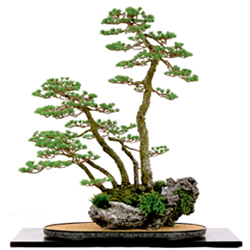
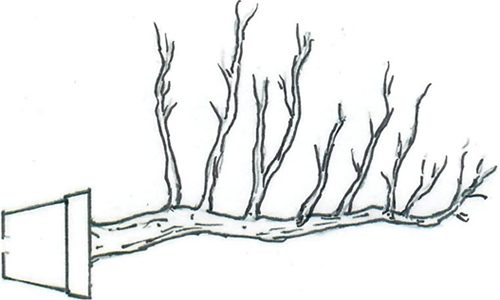
Tree laid on its side and branches on lower side removed
When there is a bend in the trunk, place it so that it curves towards the back; this will give a three dimensional effect. Any horizontal branches may be ground layered and then trained upward to form trees. Some branches will be pliable enough to be bent, while others may need to be undercut with a wedge shape wound in order to train them up vertically.
Remove any branches from the underside of the planting; wire all remaining branches normally. Be very careful on the removal of this wire at the first transplanting it may otherwise become entangled with the newly forming root system and hence later, become very difficult to remove.
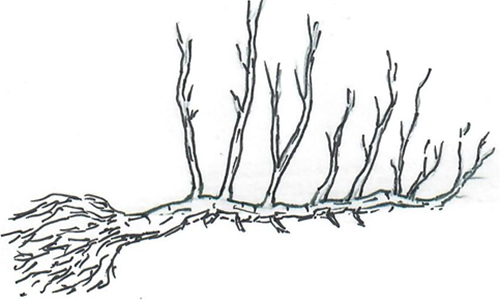
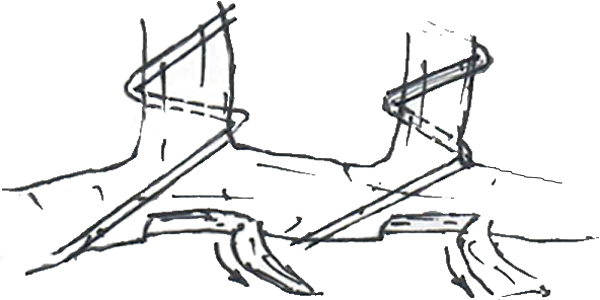
Bark underneath upward growing branches is peeled back and dusted with rooting powder;
the branches are wired to the position and shape they would be as “new” trunks.
Probably a better method of wiring is to place a heavy wire along the top side of the laid down trunk, attach it with string in a few places and then anchor the wires for each branch individually onto it. Another alternative would be to wire each branch individually with double wire looped once around the prostrate trunk. This too however, can interfere with root formation.
The technique for producing roots on the underside is reasonably easy.
- The bark is cut in the form of flaps on the underside of the trunk, especially under the positions of strong branches. The actual cuts should be the width of about a third of the circumference of the trunk and be made in the direction from base to tip.
- A piece of small wood or pebble can be used to holed the flaps open. Rooting hormone can be then dusted into the open cuts.
- A heavy wire can if necessary, be placed between the existing root system and trunk and tightened securely. This would reduce the flow of nutrients to the existing branches and encourage the new branches to send out roots around the cut areas.
- The planting should be placed in a training box filled with an open soil mix and the trunk should be buried, but not so deeply that roots form on the new trunks. Remember that roots develop only on a stationary tree, so the new planting must be tied securely so that it does not move around.
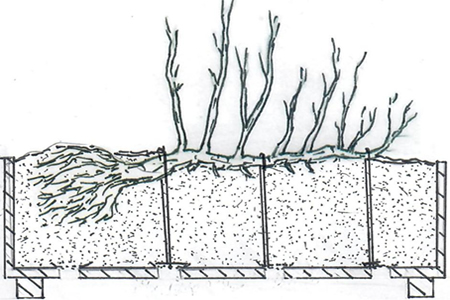
Tree planted in growing-on box and tied securely.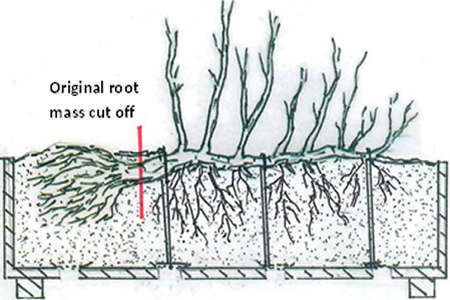
Later when new roots have grown, remove original
root mass, leaving new roots to develop. - At least 50 percent of the plant’s existing root system should be removed at the time of this initial planting. This again encourages the plant to form new roots in the desired locations. If the remaining root ball still sticks up above the soil, cover it with moss or mulch to prevent it drying out. Do not be rough with the old root ball as it is the plants only source of nutrient until the new roots have formed.
- Root formation will take one to two seasons. Fertilize and water normally. Try and avoid the temptation to dig around in the container looking for new roots … you will know soon enough when they become established.
- After one year, remove the plant from its box and inspect the root system. If sufficient roots have developed, the old root ball may be removed completely. If the new trunks have still not developed sufficient roots, remove another third of the old root system and replant.
- Continue this process each year until the desired results are achieved and the planting can be transferred into a shallow container and styling begun. At the first transplanting, try to remove all wire around the trunks to prevent damage to the new roots.
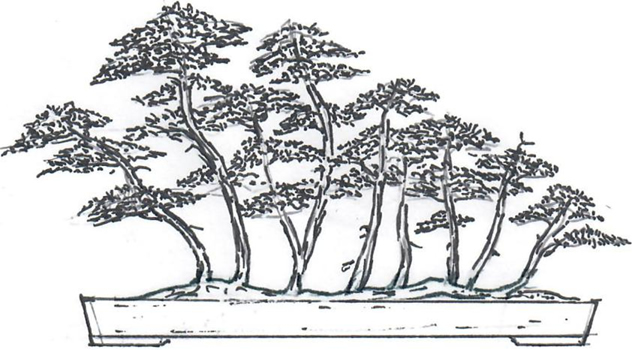
When sufficient roots have formed, remove from
growing-on box and place in a bonsai pot or tray.
Since some species root more readily than others, it is possible that areas which had been cut and dusted with rooting hormone will have healed over rather than generated new roots. If this has happened, simply repeat the procedure and use less hormone powder this time. It is better to choose quick-rooting varieties for creations of this style. Junipers and Salix are particularly accommodating more so than varieties such as pines that are far slower to produce roots.
Examples of Raft styles:
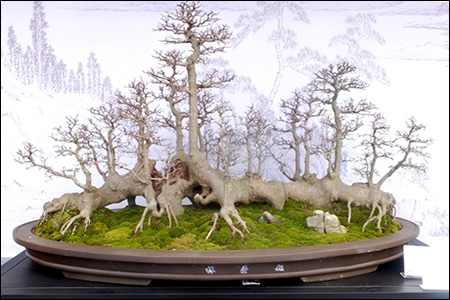
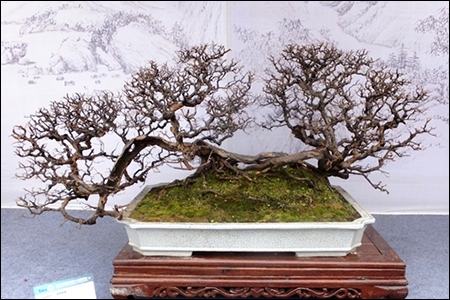
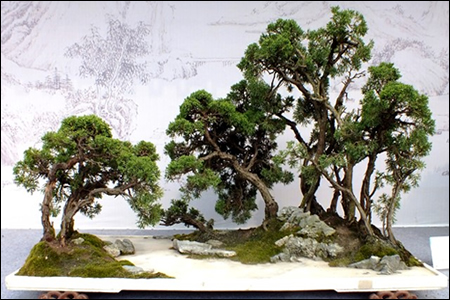
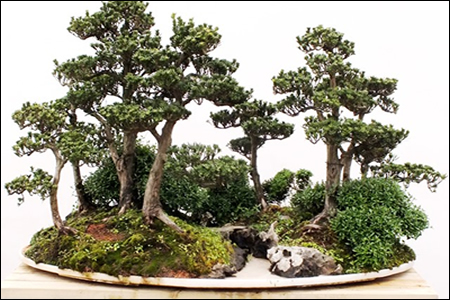
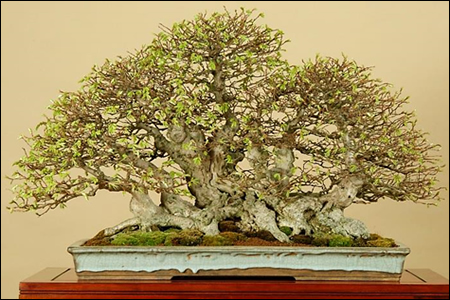
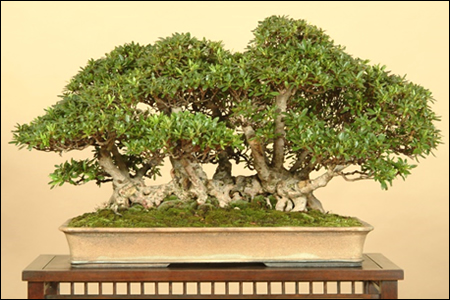
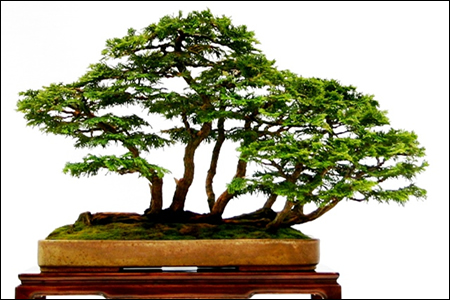
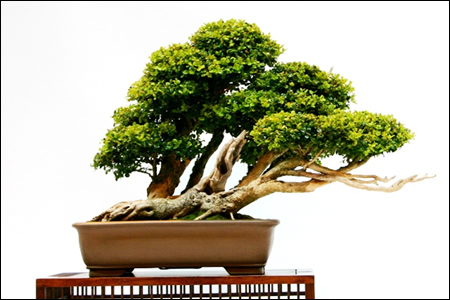
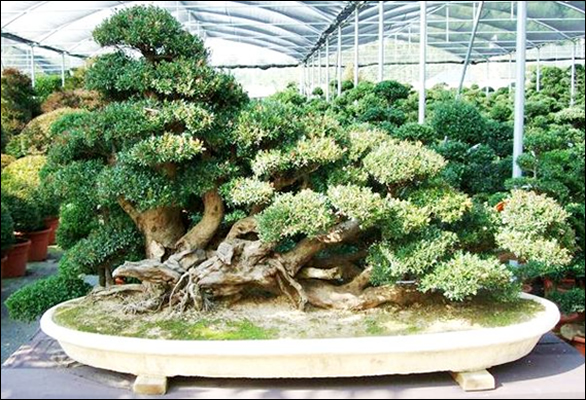
Web design: nysys
